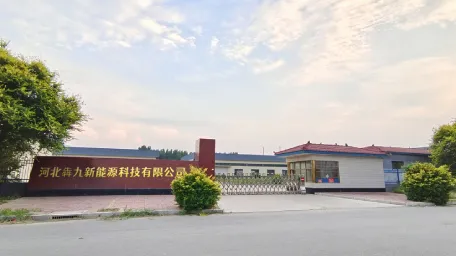solar panel inverter
Understanding Solar Panel Inverters The Heart of Solar Energy Systems
As the world increasingly turns to renewable energy, solar power has emerged as a leading source of clean energy. Central to any solar power system is the solar panel inverter, a vital component that ensures the efficient conversion of sunlight into usable electricity. In this article, we will explore the different types of solar inverters, their roles in solar energy systems, and the factors to consider when selecting the right inverter for your needs.
What is a Solar Panel Inverter?
A solar panel inverter is an electronic device that converts the direct current (DC) output of solar panels into alternating current (AC) electricity. Most household appliances and the electrical grid primarily use AC electricity, making inverters crucial for integrating solar power into everyday life. In addition to conversion, inverters also play several other essential roles such as optimizing energy production, providing safety features to protect both the system and the grid, and even giving energy monitoring capabilities to users.
Types of Solar Inverters
There are three main types of solar inverters
1. String Inverters This is the most common type of inverter used in residential solar systems. It connects a series (or string) of solar panels together, converting the combined DC electricity from all the panels into AC electricity. While string inverters are generally more affordable and simpler to install, their efficiency can be affected if one or more panels are shaded or dirty.
2. Microinverters Unlike string inverters, microinverters are installed on each individual solar panel. Each microinverter optimizes the output of its corresponding panel, ensuring that shading or soiling on one panel does not impact the performance of the others. This can lead to increased energy yield in certain situations, making microinverters a more efficient option, albeit at a higher upfront cost.
3. Power Optimizers Power optimizers work in conjunction with string inverters. They are attached to each solar panel to optimize its performance, similar to microinverters. However, they still require a central string inverter to convert the DC to AC. This combination can provide similar benefits to microinverters, such as improved efficiency and monitoring capabilities, while keeping the cost of a string inverter.
solar panel inverter

Key Features and Considerations
When selecting a solar panel inverter, several factors should be taken into account
- Efficiency Look for an inverter with a high efficiency rating, which indicates how well it converts DC electricity to AC electricity. Higher efficiencies mean more of your generated solar power will be usable.
- Warranty Since inverters are a significant investment, pay attention to the warranty offered. A longer warranty (typically 5 to 12 years for string inverters and up to 25 years for microinverters) may suggest higher confidence in product reliability.
- Monitoring Capabilities Many modern inverters come with built-in monitoring systems or apps that allow users to track energy production and consumption. This feature can help identify any issues with the system promptly.
- Safety Features Ensure that the inverter includes important safety features such as Anti-Islanding Protection, which prevents back-feeding energy to the grid during a power outage.
- Installation and Maintenance Consider the installation complexity. String inverters generally take less time to install than microinverters. Additionally, think about accessibility for future maintenance and repairs.
Conclusion
In conclusion, solar panel inverters are integral to harnessing the power of the sun effectively. They not only convert DC electricity to AC but also maximize energy production, offer safety features, and provide monitoring solutions. With options like string inverters, microinverters, and power optimizers, there is a suitable choice for every solar energy system, depending on individual needs and circumstances. As more people move towards sustainable energy practices, understanding the role and functionality of solar inverters is key to making informed decisions about solar investments. As technology evolves and costs decrease, embracing solar power has never been more attainable, making inverters a critical consideration in the renewable energy journey.
-
String Solar Inverter: The High-Efficiency Solution for Smart Solar EnergyNewsJul.14,2025
-
Revolutionizing Rooftop Energy with the Power of the Micro Solar InverterNewsJul.14,2025
-
Power Independence with Smart Off Grid Solar Inverter SolutionsNewsJul.14,2025
-
On Grid Solar Inverter: Powering the Future with Smart Grid IntegrationNewsJul.14,2025
-
Monocrystalline Solar Panels: High-Efficiency Power for the Future of Clean EnergyNewsJul.14,2025
-
Bifacial Solar Panel: A Smarter Investment for Next-Generation Energy SystemsNewsJul.14,2025







